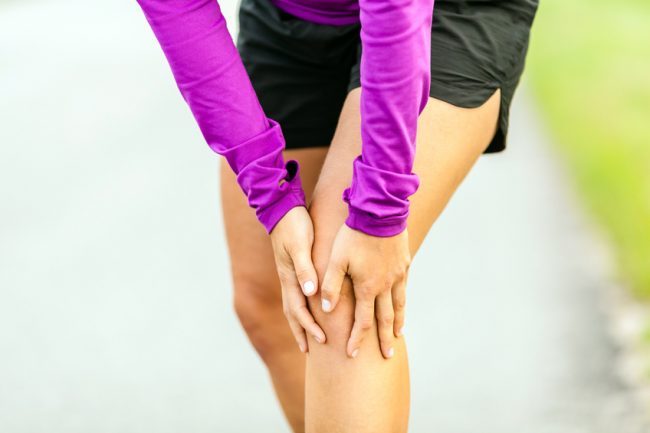It happens out of nowhere. You’re in the middle of doing a set, or running on the treadmill and all of a sudden—BAM—you’re experiencing a full-blown cramp. Whether you’re a ballet dancer or a triathlete, beginner or advanced, anyone is vulnerable to cramping.
What causes a muscle cramp?
A muscle cramp is a sudden involuntary contraction of one or more muscles which can last either a few seconds to a few minutes and can lead to next-day soreness.
Several causes of muscle cramps may be:
- Low calcium and magnesium levels
- Overexerting the muscle and fatigue
- Not stretching properly to help blood circulation
- Dehydration
- Low electrolytes
- Some medications (check with your doctor)
How to prevent muscle cramps
To prevent muscle cramps from happening, make these following steps a part of your pre-workout routine:
1. Hydrate
Before your workout, keep a 20-oz. water bottle handy that you can sip 2-3 hours before training. You may want to increase this amount if the heat is up. If water isn’t your thing, try coconut water, which is full of electrolytes, free of added sugars and has more potassium than a banana. And remember to continue to drink water, coconut water, or a sport drink during your workout as well.
2. Snack smart
Practicing proper nutrition before working out may also help alleviate a muscle cramp. Fruits like melons and berries, are hydrating and filled with natural sugar and vitamins. Pretzels, which are low in fat, will give you that little extra sodium to help ward off cramping. Calcium-rich foods such as yogurt, low fat cheese and nuts that are high in magnesium are great options as well. Adding a multivitamin that contains vitamin B, D, E, magnesium and zinc may also help prevent muscle cramps.
3. Stretch
After a short warmup to get blood circulating, focus on stretching the muscle or muscles you will be training. Then while exercising, take time in between sets to stretch calves, thighs and hamstrings. It’s OK to take breaks periodically and rest during your workout (don’t forget to continue sipping water).
What to do when you get a muscle cramp
Stop, rest and apply pressure to the cramped muscle. Really massage the muscle that is cramping by using your thumbs to press into the muscle, moving in a circulating motion.
5. Stretch it
After massaging the muscle, it’s time to stretch again. Use static stretching (holding a stretch for at least 30 seconds) to help stop the cramp. This often works because it reduces muscle contraction.
6. Apply ice
Applying ice to your cramped muscle post workout reduces swelling, spasms and temporarily reduces pain. Use an ice pack for 10-20 minutes.
Taking an Epsom salt bath after a workout is a natural way of relaxing muscles and easing pain along with decreasing inflammation. While filling up a tub with warm water, add a cup of salt, swirl around and relax!

